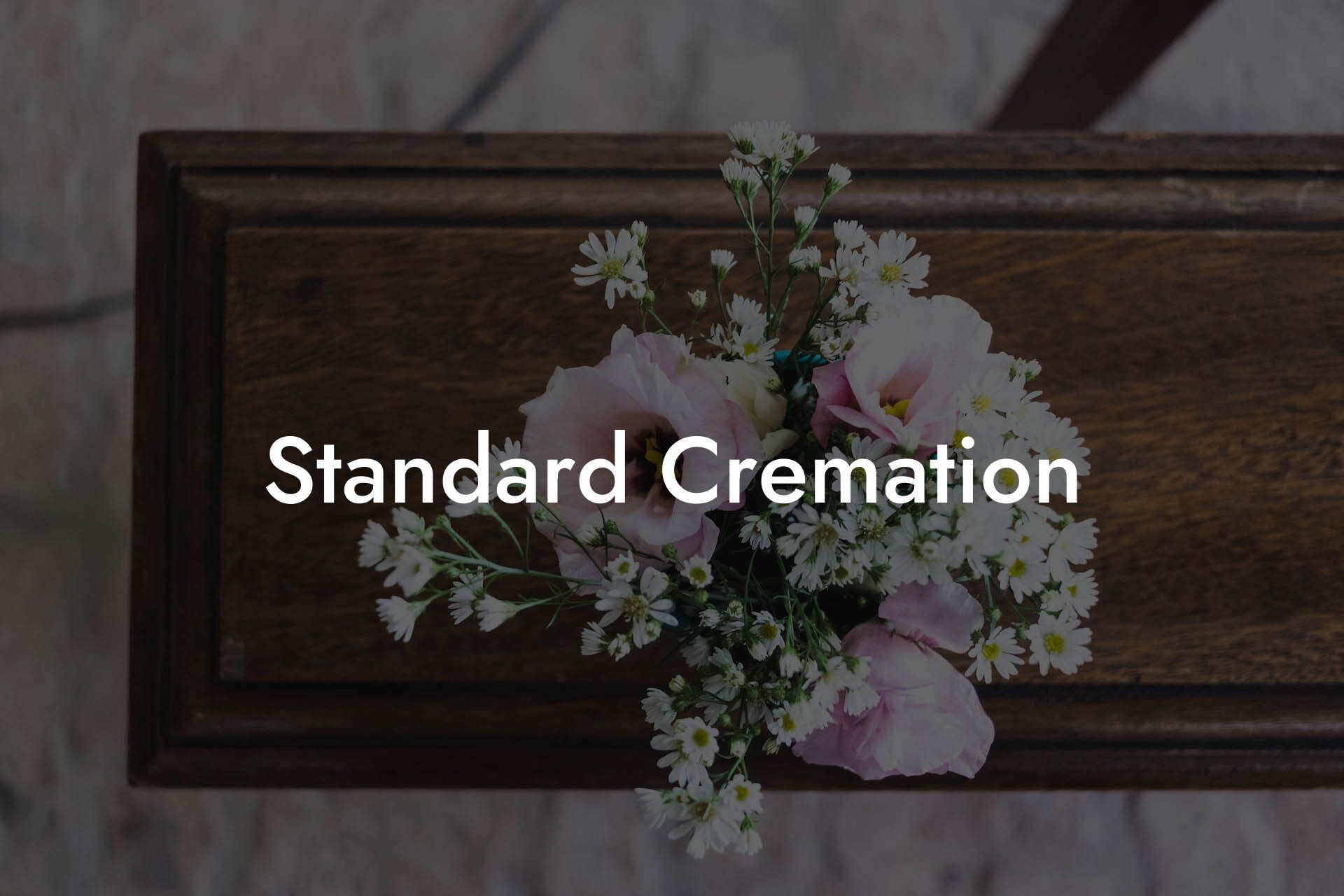Imagine a farewell ritual that not only honors your loved one but also respects the planet. Welcome to the world of standard cremation, a modern, eco-friendly, and cost-effective way to say goodbye. Whether you're planning ahead or navigating a difficult time, this comprehensive guide will walk you through the process, benefits, and everything you need to know about standard cremation.
Quick Links to Useful Sections
What is Standard Cremation?
Standard cremation is a type of cremation that involves the burning of the deceased body at high temperatures, typically between 1400°C to 1800°C, to reduce it to its basic elements. The resulting ashes, also known as cremated remains, are then returned to the family.
Unlike traditional burial methods, standard cremation is a more environmentally friendly option, as it doesn't require the use of land, embalming fluids, or other resources. Additionally, it's often more cost-effective than traditional burial, making it an attractive choice for many families.
The Process of Standard Cremation
The process of standard cremation typically involves the following steps:
- Preparation: The deceased is prepared for cremation by removing any medical devices, pacemakers, or other items that could interfere with the cremation process.
- Identification: The deceased is identified and verified to ensure that the correct individual is being cremated.
- Cremation: The body is placed in a cremation chamber, where it is exposed to high temperatures, reducing it to ashes.
- Processing: The ashes are then processed into a fine powder, known as cremated remains, which are returned to the family.
The entire process typically takes several hours, depending on the size of the deceased and the type of cremation equipment used.
Benefits of Standard Cremation
Standard cremation offers several benefits, including:
- Environmental Benefits: Cremation is a more eco-friendly option than traditional burial, as it doesn't require the use of land, embalming fluids, or other resources.
- Cost-Effective: Standard cremation is often less expensive than traditional burial, making it a more affordable option for many families.
- Flexibility: Cremation allows for more flexibility in terms of memorialization, as the ashes can be scattered, buried, or kept in an urn.
- Simpllicity: Standard cremation is a straightforward process that eliminates the need for embalming, caskets, and other funeral expenses.
Overall, standard cremation offers a simple, cost-effective, and eco-friendly way to say goodbye to your loved one.
Types of Urns and Memorialization Options
Once the cremation process is complete, the ashes are returned to the family in an urn. There are many types of urns to choose from, including:
- Traditional Urns: Made from materials such as metal, wood, or ceramic, these urns are designed to hold the ashes of the deceased.
- Biodegradable Urns: Made from natural materials such as bamboo or recycled paper, these urns are designed to decompose over time.
- Scattering Urns: Designed for scattering the ashes in a special location, these urns are often made from biodegradable materials.
In addition to urns, there are many memorialization options to choose from, including:
- Scattering Gardens: Designated areas where ashes can be scattered, often with a memorial plaque or marker.
- Columbaria: Structures that house urns, often in a cemetery or memorial park.
- Home Memorials: Personalized memorials that can be kept in the home, such as a shadow box or memory table.
Ultimately, the choice of urn and memorialization option will depend on personal preference and the wishes of the deceased.
Frequently Asked Questions About Standard Cremation
Here are some frequently asked questions about standard cremation:
1. Is cremation a popular choice?
Yes, cremation is becoming increasingly popular, with over 50% of Americans choosing cremation over traditional burial.
2. Is cremation a religious practice?
No, cremation is not a religious practice, although some religions may have specific guidelines or restrictions around cremation.
3. Can I still have a funeral or memorial service with cremation?
Yes, you can still have a funeral or memorial service with cremation. Many families choose to hold a service before or after the cremation process.
4. How do I know that the ashes are really my loved one's?
Crematories have strict identification procedures in place to ensure that the ashes returned to the family are those of their loved one.
5. Can I scatter the ashes anywhere?
No, there are laws and regulations around scattering ashes, and it's best to check with local authorities before scattering.
Resources and Community Support: Your Next Steps
If you're considering standard cremation or have recently lost a loved one, there are many resources available to support you. Here are a few options:
- Cremation Associations: Organizations such as the International Cemetery, Cremation and Funeral Association (ICCFA) and the National Funeral Directors Association (NFDA) offer resources and guidance on cremation.
- Grief Support Groups: Many organizations, such as the National Alliance for Grieving Children, offer support groups and resources for those coping with loss.
- Online Forums and Communities: Online forums and communities, such as Reddit's r/cremation, offer a space to connect with others who have experienced loss and are considering cremation.
Remember, you're not alone in this journey. Reach out to these resources and communities for support and guidance as you navigate the process of standard cremation.

